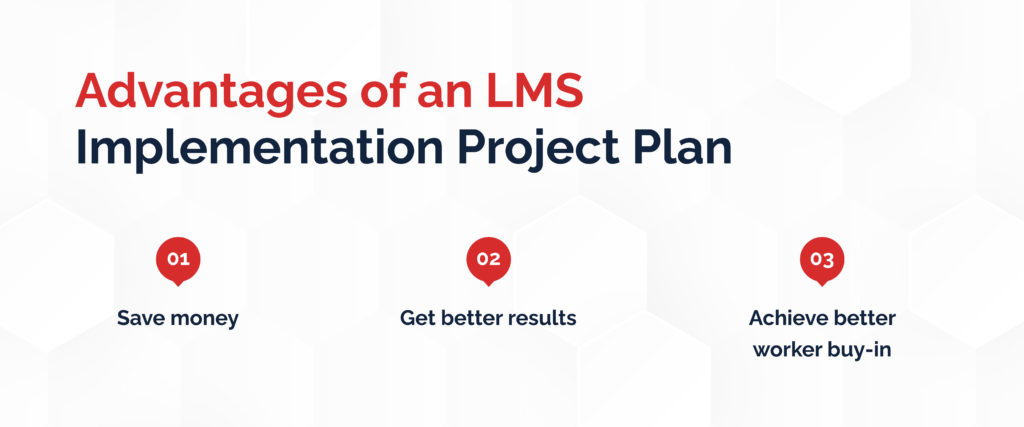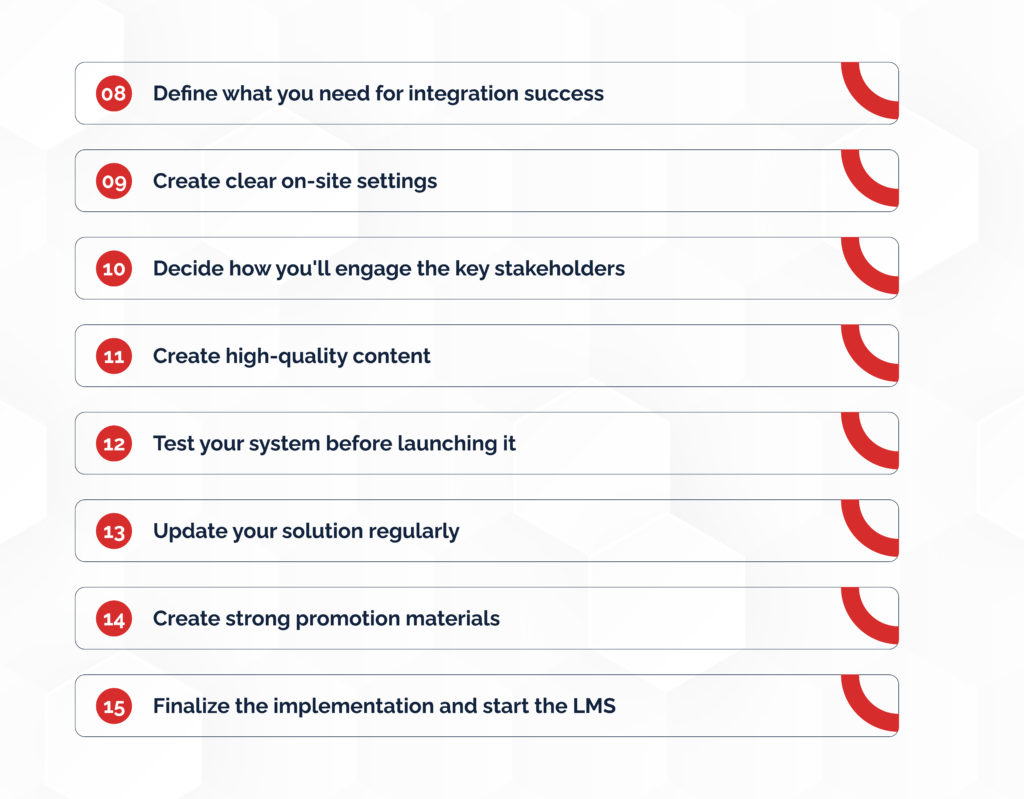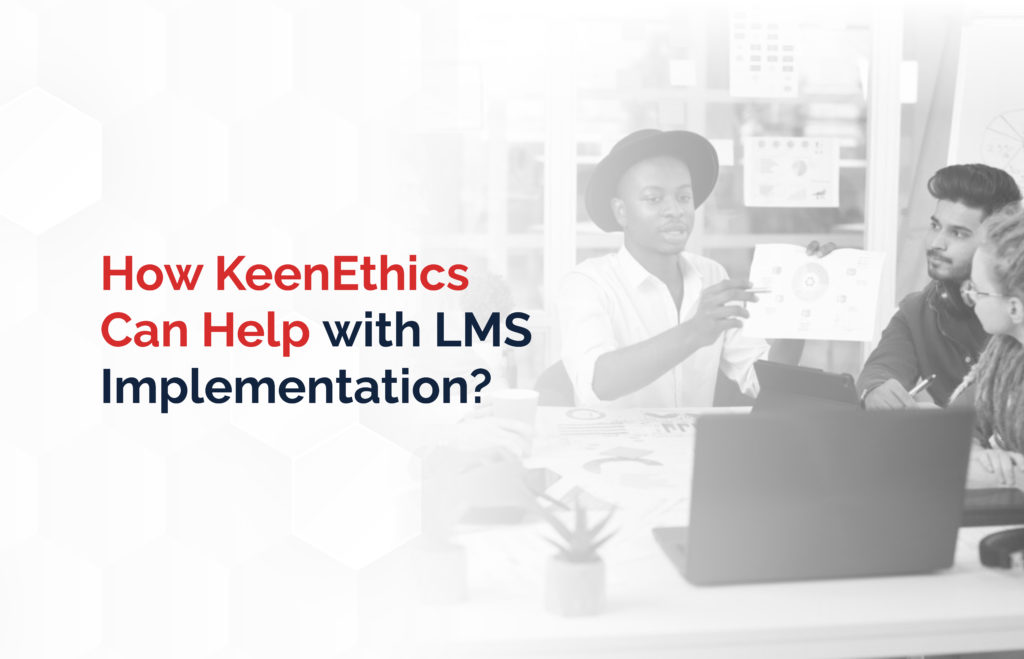The learning process is among the most important tasks for any company. Any business striving to achieve success should use all available methods for its promotion. Successful LMS implementation can be a perfect solution for improving the overall learning experience in such cases.
What Is LMS Implementation?
LMS implementation is the process of launching a new learning management system in a company after choosing an LMS provider. This process involves the choice of proper software and the creation of a full-scale project plan aimed at successful implementation. The LMS implementation checklist, as you’ll see below, involves 15 stages. You can promote such frameworks either on your own or with the help of an outside company. One thing is crucial: following past experience; many companies have already covered your path. Don’t make the mistake of reinventing the wheel. LMS implementation methodology is well-established today.
Advantages of an LMS Implementation Project Plan

A good LMS implementation project plan is essential if you intend to create a strong LMS implementation team. Here’s why:
1) Save money: an organized approach to LMS launch can help you find inefficiencies in the whole implementation strategy. We don’t start any business initiative without thorough planning. There’s no reason to think that attempts to implement your LMS are different. After all, they’re just another common business process. A good plan means significant savings in most cases.
2) Get better results: few plans fully manage to meet reality. That’s true. There’re always some changes appearing in the process. But going into something without a plan is even worse. In one case, you’re at least organized. In another one, you don’t have any proper organization. A good LMS implementation approach can help you reach better results than an out-of-a-sudden, chaotic approach. You can better understand the end results and correct the key outcomes accordingly.
3) Achieve better worker buy-in: many ideas connected to improving learning systems seem to be good on paper. However, our experience shows some employees don’t really like them. Why then implementation seems so easy for managers? They are simply afraid of saying anything against the management. This outcome is very dangerous for any company because it can lead to, for example, quiet quitting, the decision of some workers to do the bare minimum of work. A proper LMS implementation plan can help you better understand the motivations of the people you’re working with. In practice, more individuals may be willing to support the system. If you target the real needs of the organization and the people within it rather than some whims of the management, your chances of success are simply higher. The popularity of LMS implementation can ensure the active use of the relevant programs.
15 Steps for Effective LMS Implementation Process

LMS implementation requires a clear set of actions from the key decision-makers. Let’s look at the key choices you have to make while implementing such a system:
Step 1: Describe your overall project plan
Above all, you have to outline the nature of the project in mind. LMS implementation methodology requires you to focus on a clear description of the key activities to perform. Here, you should describe the chosen software and outline all key steps for its creation. In further steps, we’ll touch upon some of the key pieces of content an online learning specialist must insert. One thing is clear: your LMS implementation checklist should offer the readers a chance to understand all aspects of the relevant project.
Step 2: Define what success means for you
Once you have a general action plan, it’s crucial to understand what success means for you. An interesting fact about many processes is that they can become endless. Feature bloat disrupts software development and can destroy the most ambitious attempts of LMS implementation. Many game developers, for example, note that it’s impossible to fully develop a game: one can only stop the process at some implementation phase. To avoid this problem, decide what success in the LMS implementation process means to you. We recommend setting minimal success criteria and describing what you want in the best-case scenario, including the amount of additional resources this achievement will require. This approach can help you stop the implementation project if the process of reaching your greatest business goals becomes too costly due to, for example, lacking stakeholder buy-in. A well-defined ambition is easier to manage in most cases.
Step 3: Choose the implementation timeline
One of the key things capitalist culture celebrates is the capacity to be punctual. There’s a reason why this is the case: punctual companies are easier to deal with and manage due to being predictable and promoting continuous improvement. Your LMS implementation plan must clearly define when you want to see some results. Otherwise, there’s a risk that the implementation team can simply become too hesitant about some choices. Absolute freedom of choice is often the greatest prison. If we continue this paradoxical logic, a relaxed LMS implementation timeline is the best way to push people into last-minute decision-making.
Step 4: Create an implementation team
One of the key things about all businesses is the presence of hierarchy. To achieve something significant, it’s crucial to have people who share some responsibility for the key outcomes. An implementation team involves this goal in most cases. If you don’t connect a certain group of people to a project, chaos is inevitable. When a project has someone’s name and reputation attached to it, the probability of success is higher. After all, the individuals in question get personal interest in completing some task. An organized group can make coherent decisions and implement them fast due to understanding its goals. Don’t tell the whole HR department (for example) to focus on implementation tasks. Instead, find a clear group of volunteers who want to finish this particular project for training activities.
Step 5: Discover the true meaning of your project
One of the key problems for any big undertaking is answering a simple question: “Why?” You can have the greatest plan on Earth; however, if no one sees the reason to promote it, you’ll fail. Motivation is among the most important factors for humanity. A motivated video game player can easily disrupt someone without a will to compete. Humans are ready to show their full potential only when they feel this act is worth something. Among the LMS implementation best practices is answering the ‘why’ question. Look at your business practices. Ask what people think about the status quo in your training strategy. Suggest the idea of a new LMS system and see if they actually want it. This action alone can save you a lot of time.
Step 6: Prepare the administrators
It’s not enough to create a system for learning content. Someone also has to manage it. A big mistake many people make is creating some frameworks and then failing to recruit a proper management workforce for them. Every LMS needs a team of admins for management of its courses. Let’s be clear: train them before the full implementation, rather than after it. The best option we can offer here is to involve future administrators and content creators in the implementation process. Let people train during the early stages of system creation. This team doesn’t have to be big. You can always get additional specialists via online employee training. What is crucial is having someone who can easily train future generations of admins. In this way, they’ll have extensive knowledge of the key system characteristics to engage in efficient content management.
Step 7: Organize information conversion
All companies store some data in certain legacy systems. A common mistake we see is the lack of preparation for migration. You can’t simply implement a learning management system and suddenly make it work without extra time. There’s also the need to integrate the old data. Someone will have to transition your data sooner or later to complete the implementation rollout plan. If you’re unprepared, the entire process may have to be manual, leading to many potential issues. Learn about the key formats and integrate their transition into the key LMS implementation steps for educational content. It’s much easier to integrate some data storage formats without destroying any settings when your system is in the first stages of configuration. Later, the entire process may simply be too destructive. Think about the transition before rather than after implementation. After all, why make the life of an implementation team more difficult?

Step 8: Define what you need for integration success
Different facilities may have diverging implementation requirements to avoid technical issues. In some situations, LMS implementation may require the hiring of some specialists. In others, you may need to communicate with the workers and explain to them why a particular project is necessary. Don’t follow the development cases of other companies step by step. Yes, past experience prevents mistakes; however, an LMS implementation guide can’t describe all particular requirements for official rollout. You have to discover them yourself and add the key elements to the general implementation framework.
Step 9: Create clear on-site settings
All LMS programs have to focus on a particular location to enable optimized learning paths. In practice, this means you must ensure your chosen software functions well in the key hubs. There should be locations where the relevant specialists are able to access your framework without any barriers. It’s rational to focus on other implementation cases later. Create the basis before expanding into other sectors.
Step 10: Decide how you’ll engage the key stakeholders
We’ve already mentioned the need to understand the ‘why’ of the implementation process. You can have the greatest answer and the best motivation, but it may nonetheless fail to achieve proper learner engagement. The key reason for this outcome is the lack of communication. Inform people about the framework in question. Clearly describe them its benefits and the key motivation to use the framework. Many people may want a solution of this kind. Don’t hesitate: show them the reason why your LMS is the online training content solution they have been expecting for many years.
Step 11: Create high-quality content
A thing many people don’t understand is that the LMS implementation plan isn’t about software alone. A good LMS must also have strong training material. Your framework can be the best in the world regarding systems integration technology. But, why would anyone use it if it doesn’t have content? The video gaming world, for example, offers many sad examples of this phenomenon. Even Sony, one of the most successful gaming companies, has once almost bankrupted itself due to presenting a very small game choice for its PS3. While creating an LMS, you should focus on delivering great content for it too. Your software can have some issues; what people won’t forgive is the lack of interesting materials, which ultimately represent a broader business objective.
Step 12: Test your system before launching it
Don’t implement a system without knowing its full-scale capabilities for learners. Many programs look well on paper. Then, they fail in real-life scenarios. Your LMS implementation plan must involve a thorough real-life test of the project. Learn how your system responds to real conditions. Test how many connections can disrupt the system and what UI decisions are annoying for the average customer. This important feedback is a sanity check capable of showcasing the weaknesses and strengths of certain implementation ideas.
Step 13: Update your solution regularly
We are yet to see a system getting everything right from the get-go in terms of LMS features adoption. Your LMS implementation process is likely to have some blind spots regarding user experience. Regular post-release updates can ensure the gradual improvement of the framework. If you don’t introduce any updates, the rise of negativity toward your system is, regrettably, inevitable. People hate systems that don’t evolve. Resolving some of their ‘birth defects’ is vital for the implementation timeframe and ultimate project completion.
Step 14: Create strong promotion materials
In order to effectively reach all key stakeholders, it is imperative to craft persuasive messages. Here, we recommend following the professional frameworks with clear step guides. Use marketing solutions. Approach the learning management system implementation as a product launch process. Invest in advertising it. Present some slogans. Offer symbols. Turn your campaign into something memorable.
Step 15: Finalize the implementation and start the LMS
As we’ve mentioned before, it’s often dangerous to focus too much on perfecting everything. Once you’ve reached your minimum goals, such as getting positive user feedback, contact your LMS provider and launch the system. It’s better to reach the maximal requirements later. Several post-release updates can resolve the remaining problems. In case of resource constraints, even a minimum viable product can work.
How Can Keenethics Help with LMS Implementation?

Keenethics deals with many instances of software development and implementation. We’ve managed to jumpstart many projects. This means our teams can be of great help to you in LMS implementation. Firstly, we possess extensive knowledge of the existing frameworks on the market. Our specialists can help you use the current tools to mold them into something interesting. Secondly, our extensive knowledge of JavaScript frameworks also enables the creation of new solutions. We can develop a small or medium LMS program from scratch within four to sixteen weeks (depending on complexity). What is a successful LMS implementation process? Above all, smooth LMS implementation means creating a solution that matches your needs in terms of performance and LMS interface. Thus, we’re ready to consider a wide set of implementation options. Don’t hesitate to select the ones you want.
In Conclusion
LMS implementation can give your company a major advantage. As you can see, starting an LMS project isn’t difficult. You have to follow a set of reasonable steps. The goal of our guide is to help you remove a maximum number of potential pitfalls. After reading this material, you should have a clear understanding of the key choices necessary to implement an LMS successfully. If you’re hesitant to do everything yourself, the option of asking for outside help is also there. Our company is ready to provide help with LMS software. Contact us, and we’ll start searching for a solution.
Plan and achieve great results with Keenethics. We’re here to help.












